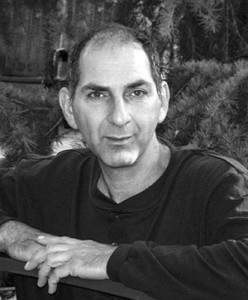Leave Your Shoes at the Door – A Conscious Dance Documentary
About the Project
A short description:
What happens when dance is more than just moving your body? This heart felt documentary shares what conscious dancers experience, their transformation, and the community that arises around them.
Conscious dance offers a balm for the increasing isolation of our culture. It meets our essential human needs to be seen and held, to touch, to be in community, to inhabit flesh and bone, to transcend. And it all starts with the simple act of removing our shoes and feeling our feet on the ground.
Producer Ken Martini, Directors Ken Martini, Sudha Putnam, Writer Sudha Putnam, Cinematographer Ken Martini, Editors Emmanuel Moran, Ken Martini Additional Cameras Dan Shimer, Eric Perez, Sound Engineering Jesse Mills, Colorist: Ben Staub, My wife Denise Martini who supported me through the countless hours of production and editing.
Interviews: Amanda Brunato, Bachi Brunato, Belisa Amaro, Carola Marashi M.A., Christina Tuccillo, David Russell, Danielle Bowen, Deborah Cohan MD OB/Gyn, Elizabeth Betwixt, Eva Clay LCSW CHt, Felicia Matto-Shepard MFT, Jairo Wilches, Jim Matto-Shepard PhD, Jo Cobbett, Kathy Altman, Karl Frost PhD, Kierra Foster, Lori Saltzman, Mona Chatterji SLP, Riki Bloom MFT, Robert Perica, Rodney Birney MD, Sylvie Minot, Tim Hartnett PhD, Tom Sassano, Vinn Arjuna Martí, Zora Couer DeRoy, Zuza Engler PhD.
Dance Locations: Ecstatic Dance Oakland, Ecstatic Dance Amsterdam, Ecstatic Dance Retreat Hawaii, Sacred Circle Portland, NCDC Summer Dance Camp, Soul Motion Berkeley CA with Valerie Chafograck, Soul Motion Berkeley CA with Vinn Arjuna Martí, Dance Portal Petaluma CA, 5Rhythms with Kierra Foster NYC, 5Rhythms with Jonathn Horan Sonoma CA, Syzgy Dance Project with Sylvie Minot Berkeley CA.
What is Conscious Dance?
Conscious dance is also known as “intentional dance”. This is because the dancers enters the dance floor with a sense of intention. Their specific intentions may include working out personal issues, entering a state of meditation, or expressing themselves authentically and creatively. Regardless of the terms used, a conscious dancer is frequently in pursuit of a deeper awareness of one’s self, and others on the dance floor.
Many people new to this form of dance find their way to an ecstatic dance, Barefoot Boogie, or other free form dance venue. Once there, they discover that many of the people in the space have a background in one or more modalities such as 5Rhythms, Soul Motion, or contact improvisation. If they find the dance compelling, it usually leads them to taking classes and workshops. This is one of the main reasons the movement is growing rapidly around the world. While ecstatic dance and conscious dance do not require dance experience, contact improvisation requires a bit of training to gain a basic skill set.
Karen Berggren offers a lovely description of ecstatic dance:
Ecstatic dance is a form of active meditation or prayer where music, movement, and the breath are used to shift brain wave patterns from the day-to-day cognitive beta state, to the more meditative and insightful alpha state.*
*Note: Reprinted with permission of Karen Berggren ©2005
 About the producer: I was drawn to dance in my teens and twenties and danced in clubs. That grew tiresome due to the smoke, loud music, and alcohol. In 1985 I started doing the 5Rhythms dance practice, and after three years of weekly classes I was starting to land in my body. During that time I found contact improvisation, which has kept me engaged for almost 30 years. I have derived many benefits from the dance such as being more grounded, having a better self image, and being more perceptive of my environment and others who occupy it. The dance not only helped shape me into a better person in many respects, it also offered a supportive community that is ever present in my life.
About the producer: I was drawn to dance in my teens and twenties and danced in clubs. That grew tiresome due to the smoke, loud music, and alcohol. In 1985 I started doing the 5Rhythms dance practice, and after three years of weekly classes I was starting to land in my body. During that time I found contact improvisation, which has kept me engaged for almost 30 years. I have derived many benefits from the dance such as being more grounded, having a better self image, and being more perceptive of my environment and others who occupy it. The dance not only helped shape me into a better person in many respects, it also offered a supportive community that is ever present in my life.
It seemed to me that people could be more content and vital if they had a movement practice in their lives. So I set out to make a video to share this experience of the conscious dance movement. Having a background in video and many years as a dancer it felt like a natural fit to do this. With this documentary I hope I can bring something positive and engaging, and maybe give a bit of a nudge to people new to the movement, to give it try.
Ken Martini